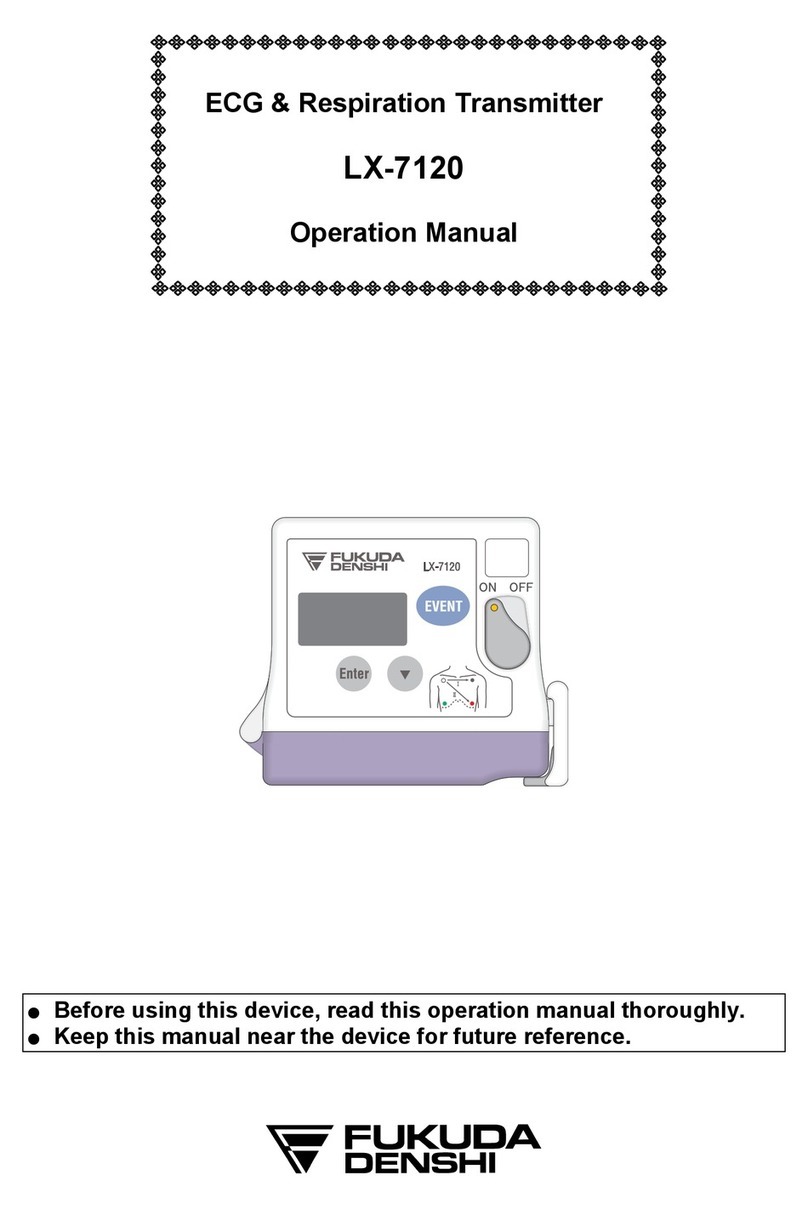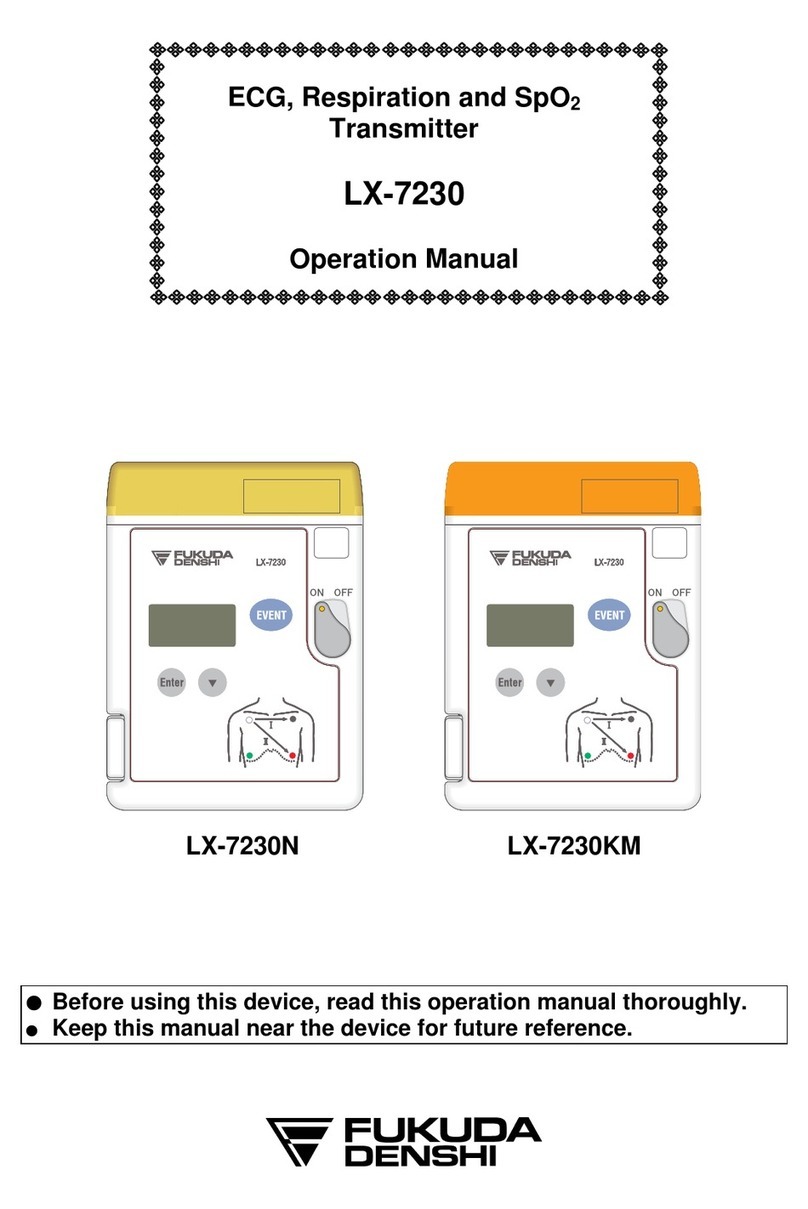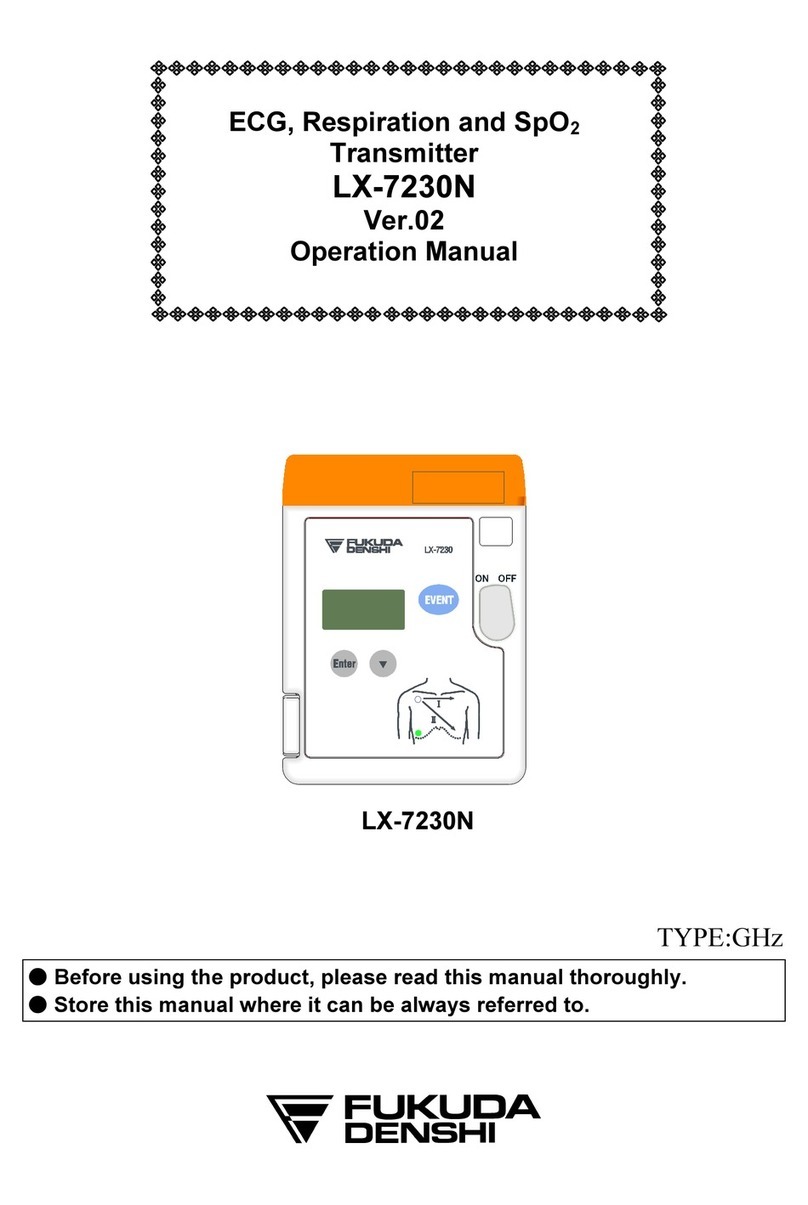
iv
Precautions for Safe Operation of Medical Electrical Equipment
Cautions described here are regarding the general instructions for safety use to the patient and the
operator. As for cautions about the LX-7120, please refer to the following page.
CAUTION
1. Users should have a thorough knowledge of the operation before
using this equipment.
2. Pay attention to the following when installing or storing the
equipment.
•Do not install or store in an area where the equipment will be subject to
splashing water.
•Do not install or store in an area where the environmental conditions, such as
atmospheric pressure, temperature, humidity, ventilation, sunlight, dust,
sodium, sulfur, will adversely affect the system.
•Place the equipment on a stable surface where there is no inclination, vibration,
or shock (including during transportation).
•Do not install or store in an area where chemicals are stored or gases are
generated.
3. Before operating the equipment, verify the following items.
•Check the cable connection and polarity to ensure proper operation of the
equipment.
•Ensure that all cables are firmly and safely connected. Especially, recheck the
attachment and connection condition of electrode.
•Pay special attention when the equipment is used in conjunction with other
equipment as it may cause erroneous judgment and danger.
•Check the remaining battery level.
•When replacing the battery, make sure that the battery polarity is correct. Do
not charge the battery.
4. During operation of the equipment, verify the following items.
•Do not operate the equipment beyond the time period required for diagnosis
and medical care.
•Do not pick up and/or swing the equipment pulling/grabbing the cable part. It
may damage the equipment and lead to measurement error.
•Always observe the equipment and patient to ensure safe operation of the
equipment.
•If any abnormality is found on the equipment or patient, take appropriate
measures such as ceasing operation of the equipment and/or detaching the
electrode, in the safest way for the patient.
•Do not allow the patient to come in contact with other equipments.
5. After using the equipment, verify the following items.
•Make sure to turn off the power of the equipment.
•When unplugging the cables, do not apply excessive force on the cable and pull
from its connector.
•Clean the accessories and cables, and keep them together in one place.
•Keep the equipment clean to ensure proper operation for the next use.
•Make sure to remove the batteries if the equipment is not used for a long time.
The leakage from the batteries may damage the device or an explosion from
the batteries may occur.
6. If the equipment is damaged and in need of repair, ensure patient
safety by immediately turning the equipment off and remove the
electrodes and/or probe from the patient. User should not attempt
service. Label the unit “OUT OF ORDER” and contact Fukuda
Denshi representative.
7. Do not remodel the equipment.
8. Maintenance Check
•Make sure to periodically check the equipment, and accessories.
•Before reusing the equipment that has been left unused for a while, make sure
that the equipment works normally and safely.






























